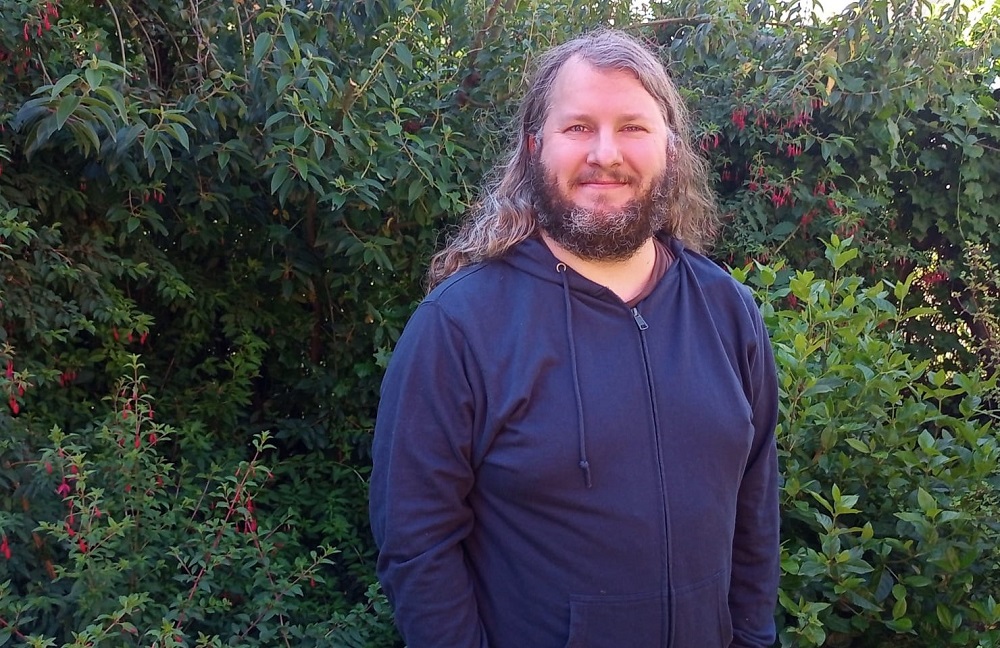There are moments and people that stimulate deepening in little explored areas. In the case of Maximilian Wentzel, a wood engineer from the Faculty of Forest Sciences and Natural Resources of the Universidad Austral (UACh) and a doctor in Biology and Technology of Wood from the Georg-August University (Germany), his approach was on the other hand scientist: Dr. Aldo Rolleri, a researcher at his alma mater’s Forest Products Laboratory. And the topic: the thermal modification of the material
Such was his interest in the subject that his doctoral thesis dealt mainly with the properties of a modified wood; then, eucalyptus nitens. And when he was back in Chile, he learned about the efforts of other UACh researchers to value native species, facilitating access to raulí plantation trials. Today Wentzel is carrying out a postdoctoral project that aims to demonstrate the early valorization of this species, characterized by its high productive potential among the country’s timber options.
Dr. Maximilian Wentzel.
As Wentzel explains, “the promising results of this species under plantation and intensive forestry, plus ongoing associated research, have put our focus on it. Therefore, within a long-term vision of evaluations, today we have material between 15 and 25 years old, coming from various growth sites”.
“It is an opportunity that we want to take advantage of to characterize this species, before and after a thermal modification, hoping that what is obtained from the project can contribute to the efforts that seek to demonstrate the potential of native woods that grow under the aforementioned regime. ”, he adds.
What does the process consist of and what benefits would it bring to the wood?
As the expert says, the long-term vision to evaluate is related to the different plantations that were selected for the study, which are located in various sectors of the Los Ríos Region. And with different average annual rainfall, in addition to types of soil.
Two are from intensive forestry, planted in 2001 and 2008, and the rest comes from an abandoned nursery dating back to 1997. In summary, we could say that the growth dynamics simulate the conditions of a renoval forest —a term that refers to a forest young— and that, in addition to evaluating the properties of this wood after thermal modification, the aim is to arrive at a new material that is far superior to its original young wood.
Regarding the methodology, trees from these three sites will be selected, being characterized and then subjected to high temperature, in the absence of oxygen, to transform their original chemical structure. Thus, the modified and differentiated raulí wood will be obtained to demonstrate improvements in some organoleptic and mechanical properties. Also in dimensional stability, resistance to attack by xylophagous fungi and its machining capabilities.
The knowledge generated is expected to demonstrate the potential of products with high added value. And along with optimizing the heat treatment based on the characteristics of the material, a future generation of products with the solution is projected; of high interest in the forestry-timber market.
After obtaining these new properties, the idea, according to Wentzel, is that the material “can be used to innovate in products such as decking, cladding, furniture or panels, which will be associated with a new material that encourages the use of genetics. of the country, which increases the carbon sequestration time and that, at the end of the product’s life cycle, these can be recycled or reused, stimulating a circular economy”.
Sustainable supply chain
To carry out research of this type, it is quite common for the raw material to come from thinning sources, as a silvicultural practice in wood crops. For the same reason, says the doctor in Wood Biology and Technology, the interesting thing about taking advantage of this material that is usually used for firewood, or for waste, is the opportunity to revalue it as the plantation matures.
In fact, a plantation with intensive forestry of this species could be harvested after 30 years, so if it is shown that the wood that comes from the aforementioned practice can be used, it would mean a higher income option, during and until the final harvest of the wood.
In addition, the new uses, based on the results achieved, could promote Chilean native wood as a potential innovative element to generate products, but always, at the same time, diversifying the landscape with our own species. Because, as Dr. Maximilian Wentzel says, the research aims to become a contribution to other studies on the sustainable supply chain.













Add Comment